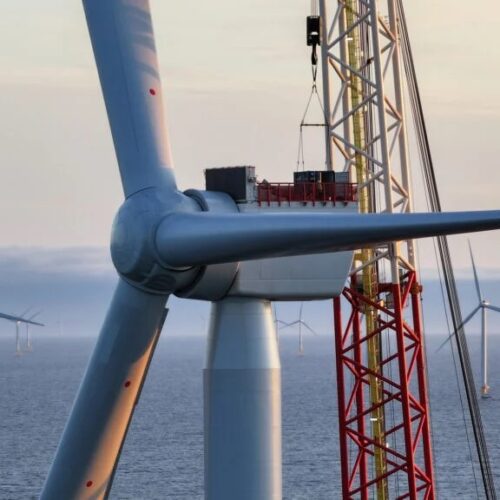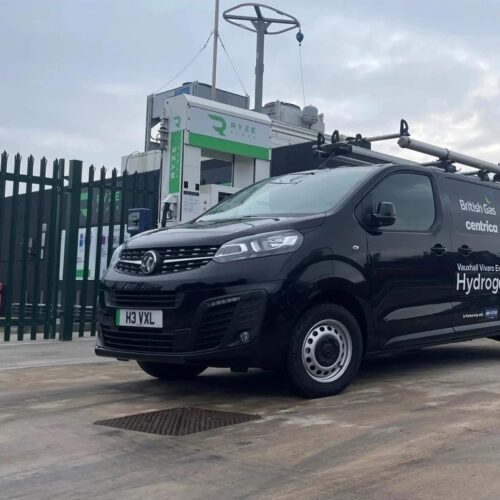In this contributed blog, CEO of Naked Energy Christophe Williams suggests that while electricity grid connections are paused we turn our attention to the decarbonisation of a different sector.
Demand for electricity is set to soar. The National Grid estimates it will rise by 50% by 2035, driven by the adoption of AI, EVs and electric heating systems like heat pumps.
But we have one of the oldest grids in the world, and it’s struggling. The grid is being modernised, but we only have a decade to do so and mitigate the worst impacts of climate change. This is a tough ask, given it took us a century to build it to this point.
It’s been blindingly obvious for some time now that decarbonising electricity alone was never going to get us to net zero. Heat is the largest energy end-use globally, accounting for roughly 50%; electricity consumes around 20% of all energy usage.
After the National Energy System Operator’s (NESO’s) suspension of new grid applications, businesses are being forced to pause their decarbonisation efforts.
But we can’t put net zero on pause while NESO works through the backlog of projects in the queue. Businesses have net zero goals to hit and have to act now.
A policy pivot
The Government needs to pivot and focus on decarbonising heat as well as electricity.
Heat is responsible for roughly 37% of the UK’s emissions, yet it has always been overlooked in favour of electrification.
Decarbonising heat quickly and at scale is hard for commercial and industrial companies; costs can be significant, technology integration tricky, and disruptions to the day-to-day business must be avoided. It’s harder with grid applications suspended.
This is where grid-edge technologies can provide a sensible solution. These are distributed renewable energy solutions that don’t rely on the power (or gas) grid. It makes them complementary to ongoing electrification as it reduces the load that is being placed on the grid.
There is also significantly less red tape because they don’t need to join the queue to connect to the grid. In theory, there’s nothing to stop a company installing grid-edge technology on its roof to start decarbonising its heat demand tomorrow.
Creative funding and cost benefits
It not only saves end-users from excessive red tape – it saves the pockets of the taxpayer too. The European Commission estimates that governments need to spend over €584 billion (£49.81 billion) to upgrade the electricity grid to meet 2030 net zero targets – and that’s before the cost to reach 2050 targets. It’s a huge drain on the public purse. We also need to build 50 million miles of cables by 2040 for these upgrades.
Turning to grid-edge technology lightens this burden as it’s installed directly onto buildings where energy is needed. It is a distributed energy solution by nature, which means taxpayers don’t need to foot the bill for additional infrastructure to make it work, and the end-user has direct control over it as well.
These technologies can also be cheaper for the end-user when innovative finance vehicles are deployed. Power purchase agreements (PPAs) have been well established in the industry. Very similar to these are heat purchase agreements (HPAs) and heat-as-a-service (HaaS) finance mechanisms, which are gaining increasing traction in supporting heat decarbonisation.
This is the counter-argument to the noise about the net zero transition being too expensive. Grid-edge technology can be cheaper for taxpayers and end-users than continuing with the status quo of the energy transition.
Solar thermal, which generates direct heat using the sun’s energy, is particularly effective. It has existed for a century and its evolution means it can be a suitable option for many industries. For example, the British Library in London is using solar thermal to generate 216MWh of energy annually for its space heating and hot water. This is the equivalent of powering and heating a community centre or swimming pool for a year.
This technology category is increasingly used by companies in the commercial and industrial space as it increases the efficiencies of already existing heating technologies, such as gas boilers or heat pumps, significantly reduces carbon emissions, and provides a hedge against volatile energy prices.
Picking the most commercially viable technology
There’s plenty of grid-edge technology like solar thermal in the market. But to increase the pace of adoption, the government needs to expand its horizons beyond electrification and start including more grid-edge technologies in policy documents, especially for commercial and industrial heat decarbonisation.
At the end of the day, end-users can only be as sustainable as their budgets and business strategies allow them to be. We need to start including all of the available solutions so public bodies, councils and businesses can pick the most commercially viable technologies for them.
It’s predicted that by 2030 solar thermal could generate 140GWth (Gigawatt Thermal) equivalent to 75% of the derived heat produced by solid fossil fuels in Europe in 2019. While the data is impressive, right now a lack of policy support means that too many people are unaware that this option exists.
This is particularly relevant for district heating networks. These networks have already proven to be an efficient source of heat, particularly in Denmark where they supply around 64% of all Danish households. A large percentage of this has used grid-edge technology such as solar thermal.
This is not to say we should ignore the power grid. In fact, we really can’t – the decarbonisation of electricity is hugely important. What the government should do is to support it, and the best way to do this now and in the future is by also investing time and money into grid-edge technologies.
The time to think outside the box is now – we cannot afford any more delays.





